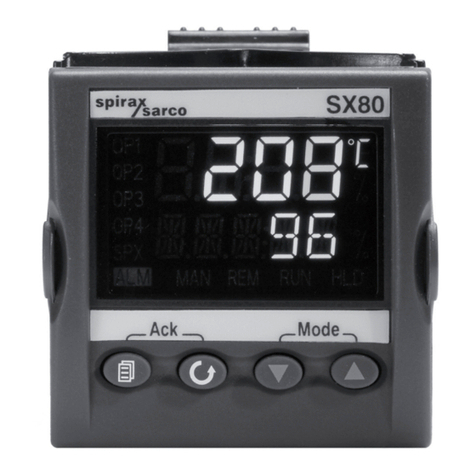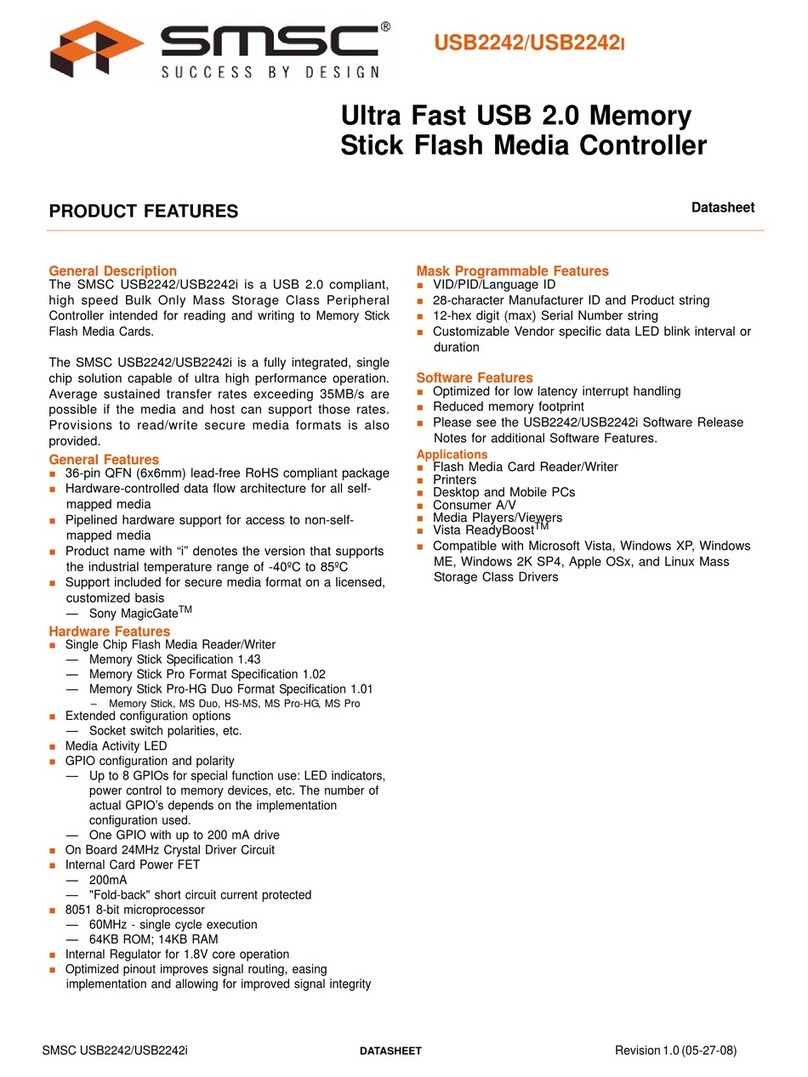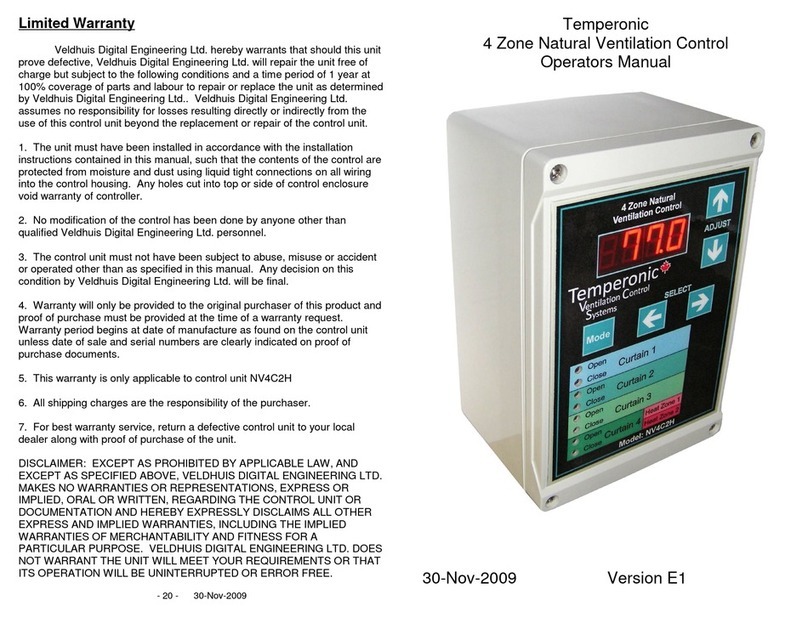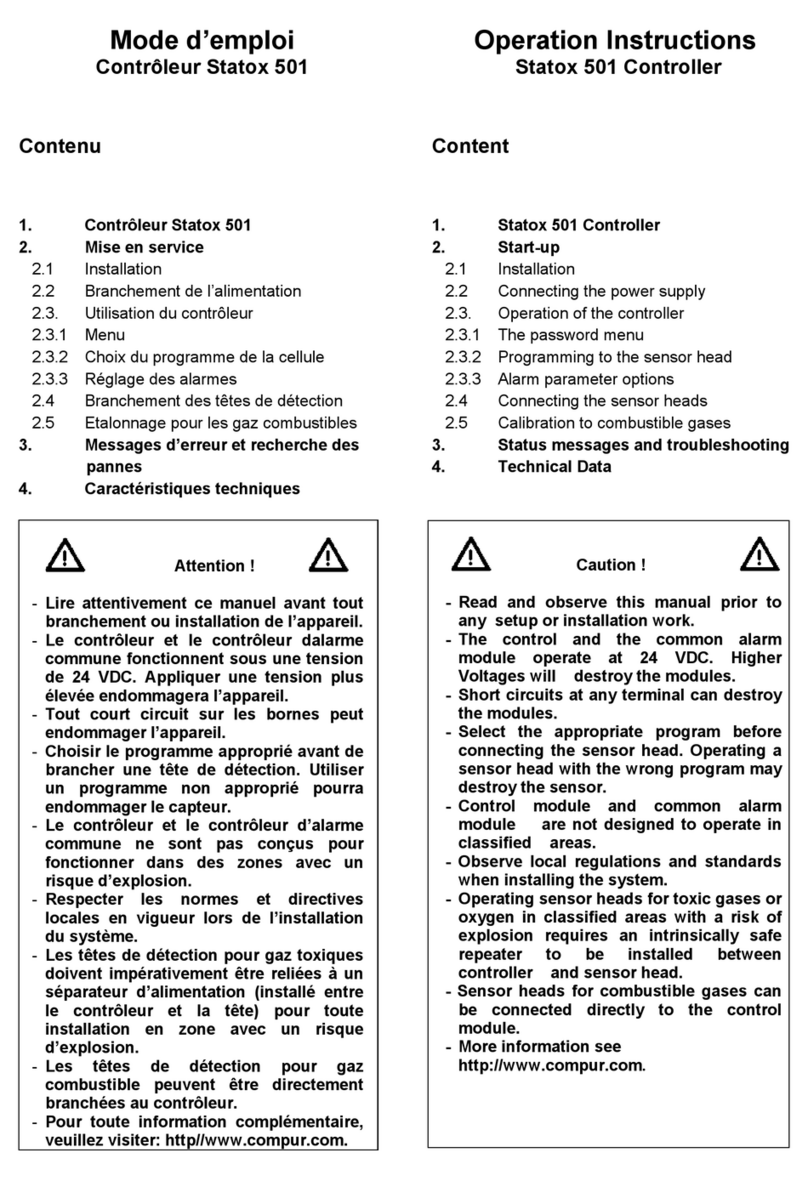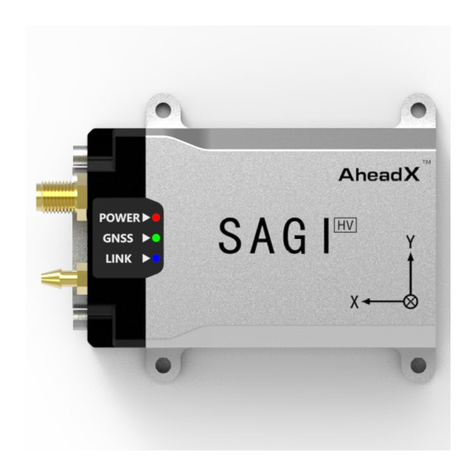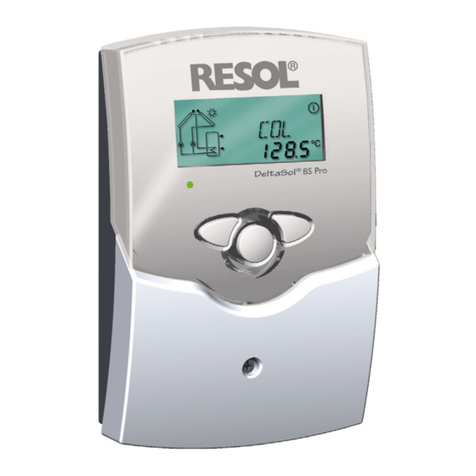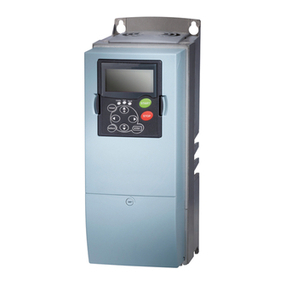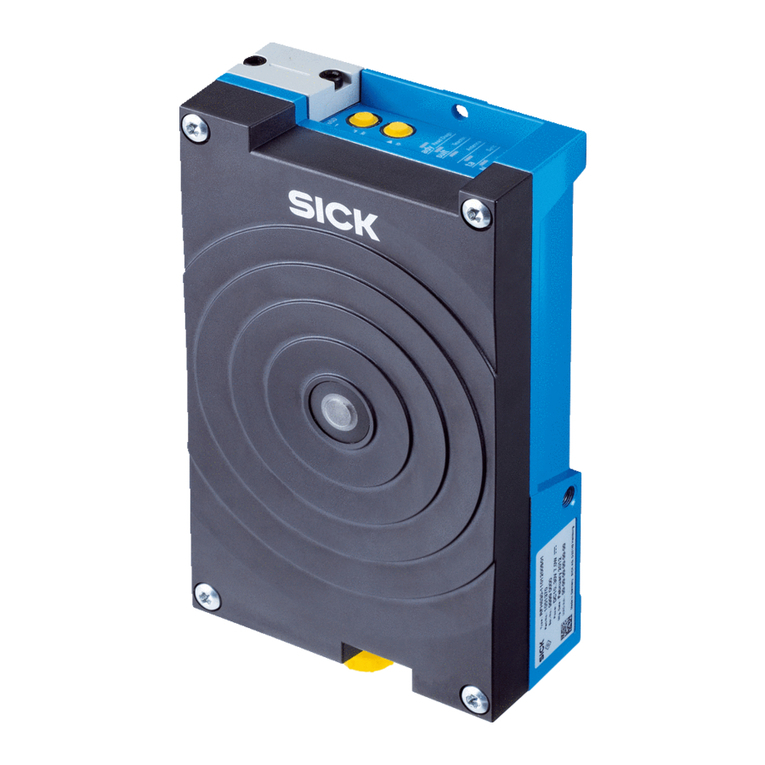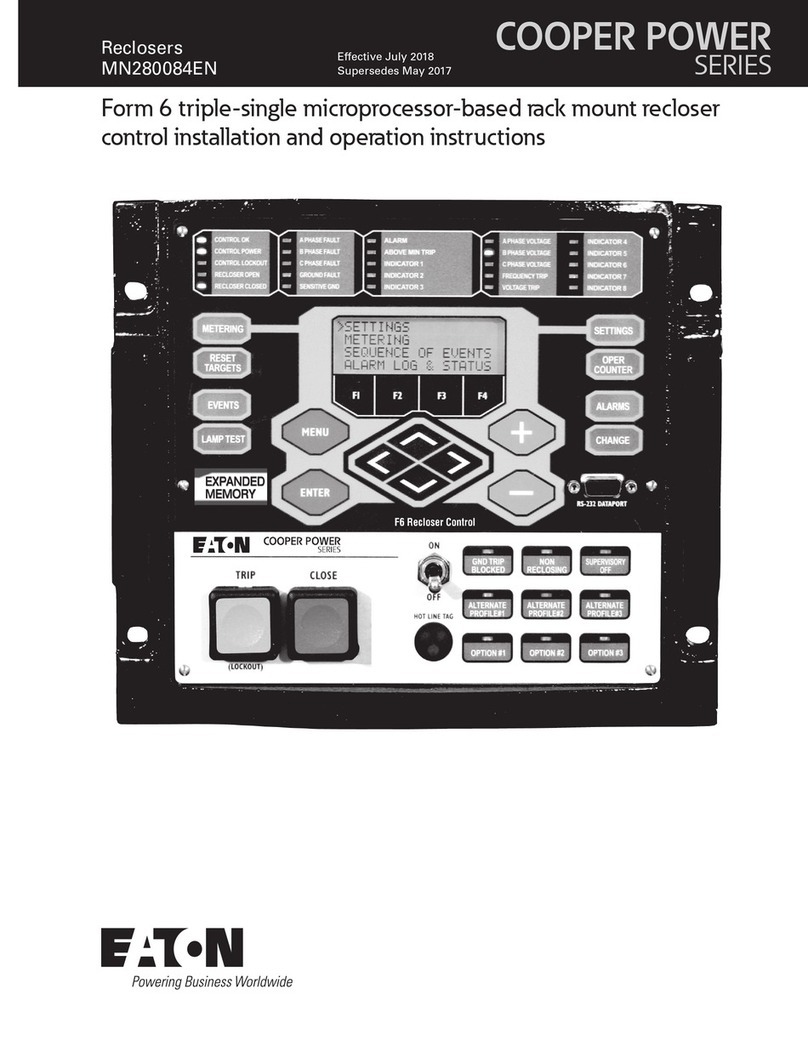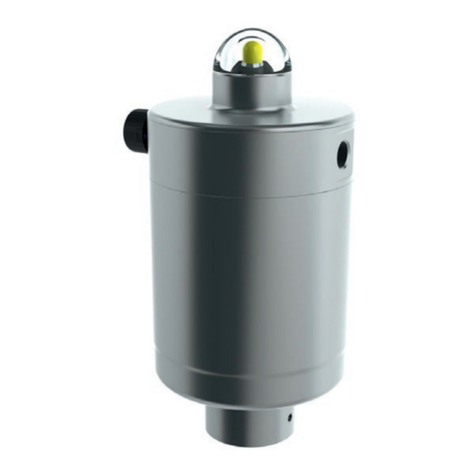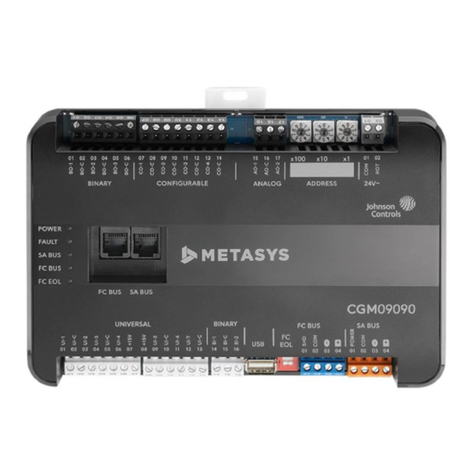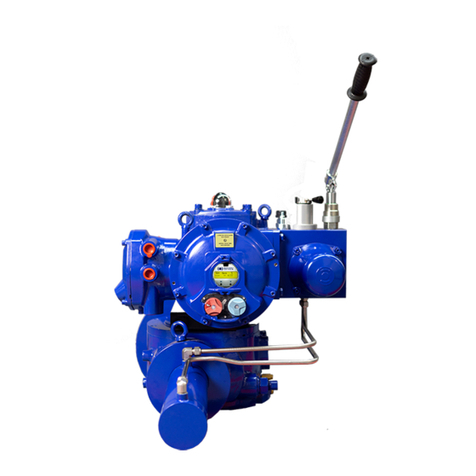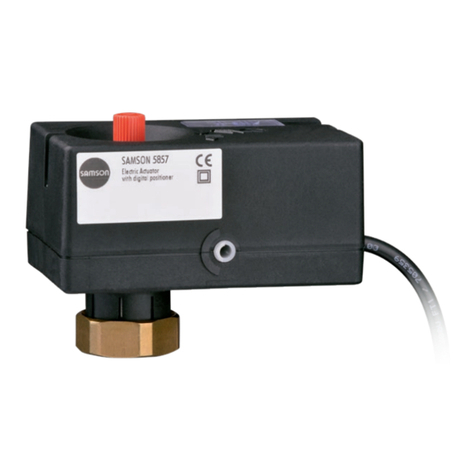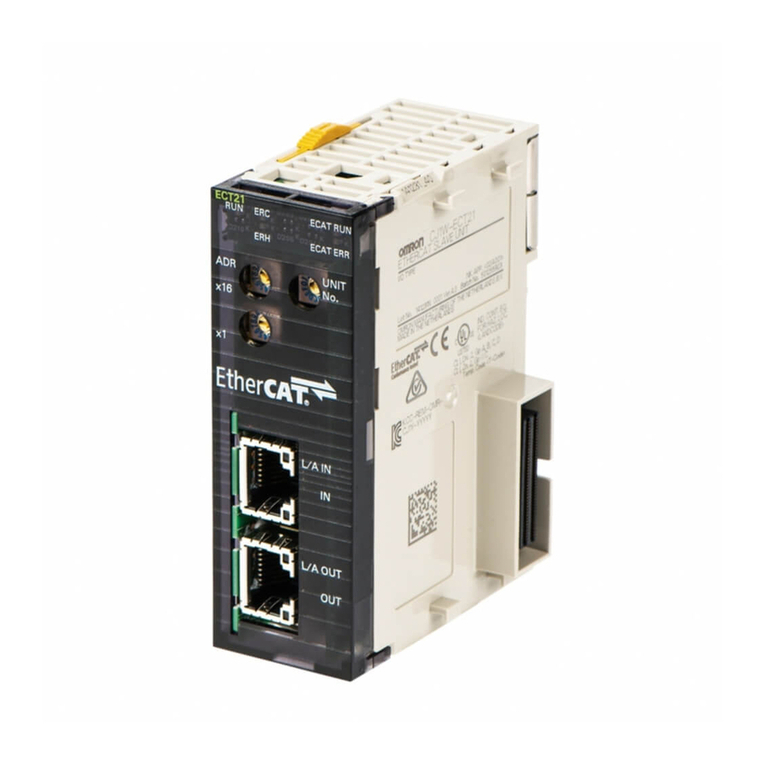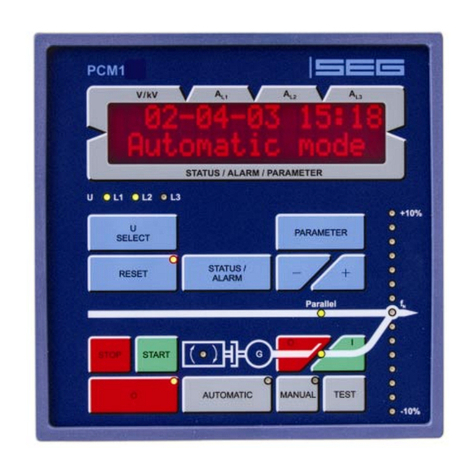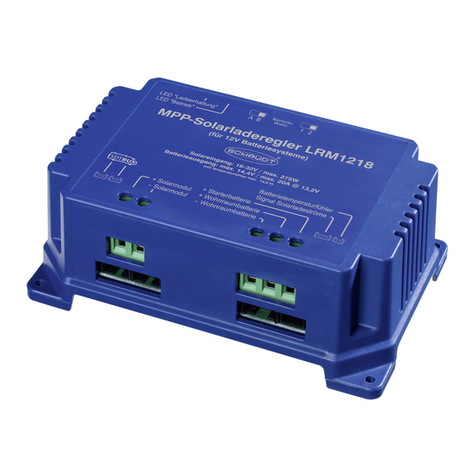SoftBaugh MSP430F44x User manual

User’s Guide
for
MSP430F44x Evaluation System (ES449)
19 January 2004
From
SoftBaugh
Custom Software, Firmware, Hardware,
and Project Management Consulting
4080 McGinnis Ferry Road
Suite 604
Alpharetta, Georgia 30005
Disclaimer:
All software, hardware, firmware and related documentation is provided “AS IS” and
without warranty or support of any kind and SoftBaugh expressly disclaims all other
warranties, express or implied, including, but not limited to, the implied warranties of
merchantability and/or fitness for a particular purpose. Under no circumstances shall
SoftBaugh be liable for any incidental, special or consequential damages that result from
the use or inability to use the software, firmware, hardware or related documentation,
even if SoftBaugh has been advised of the liability.
Unless otherwise stated, software written and copyrighted by SoftBaugh remains the
sole property of SoftBaugh. You may not modify this software or distribute it, in whole or
in part, to any other party.

SoftBaugh ES449 User’s Guide
Table of Contents
1. ES449 OVERVIEW............................................................................................................................. 5
1.1 FEATURES ...................................................................................................................................... 5
1.2 FREQUENTLY ASKED QUESTIONS .................................................................................................. 5
1.3 LABORATORY MANUAL................................................................................................................. 5
1.4 NOTATION ..................................................................................................................................... 6
1.4.1 Boards, Components and Pins.................................................................................................. 6
1.4.2 Jumpers..................................................................................................................................... 6
2. BOARD OPTIONS.............................................................................................................................. 7
2.1 JUMPER OPTIONS ........................................................................................................................... 7
2.1.1 J1 .............................................................................................................................................. 7
2.1.2 J2 .............................................................................................................................................. 7
2.1.3 J3 .............................................................................................................................................. 7
2.1.4 J4 .............................................................................................................................................. 8
2.1.5 J6 .............................................................................................................................................. 8
2.1.6 J7 .............................................................................................................................................. 8
2.1.7 J8 .............................................................................................................................................. 8
2.1.8 J9 .............................................................................................................................................. 8
2.1.9 J10 ............................................................................................................................................ 9
2.1.10 J11........................................................................................................................................ 9
2.1.11 J12........................................................................................................................................ 9
2.1.12 J13...................................................................................................................................... 10
2.1.13 J14...................................................................................................................................... 10
2.1.14 J15...................................................................................................................................... 10
2.1.15 J16...................................................................................................................................... 10
2.1.16 J17...................................................................................................................................... 10
2.1.17 J18...................................................................................................................................... 11
2.1.18 J19...................................................................................................................................... 11
2.1.19 J20...................................................................................................................................... 11
2.1.20 J21...................................................................................................................................... 11
2.1.21 J22...................................................................................................................................... 12
2.1.22 J23...................................................................................................................................... 12
2.2 TEST POINTS ................................................................................................................................13
2.3 MISCELLANEOUS BOARD OPTIONS .............................................................................................. 14
3. POWER SUPPLIES .......................................................................................................................... 16
3.1 EXTERNAL REGULATED LAB SUPPLY .......................................................................................... 16
3.2 EXTERNAL UNREGULATED LAB SUPPLY ..................................................................................... 16
3.3 EXTERNAL WALLMOUNT SUPPLY................................................................................................ 16
3.4 SINGLE-CELL WITH CAPACITIVE CHARGE-PUMP......................................................................... 17
3.5 UNREGULATED SINGLE-CELL SUPPLY ......................................................................................... 17
3.6 REGULATED SINGLE CELL SUPPLY WITH CAPACITIVE CHARGE PUMP ........................................ 17
3.7 POWER SUPPLY JUMPER OPTIONS J20 ......................................................................................... 17
4. RS232 INTERFACE.......................................................................................................................... 19
4.1 ALWAYS ON................................................................................................................................19
4.2 DISABLED .................................................................................................................................... 19
4.3 AUTO POWERDOWN..................................................................................................................... 20
5. BOOTLOADER ADAPTER ............................................................................................................ 21
6. SBLCDA2/T LCD DISPLAY ...........................................................................................................22
Page 2 of 35

SoftBaugh ES449 User’s Guide
6.1 OVERVIEW:.................................................................................................................................. 22
6.2 TYPICAL OPERATION: .................................................................................................................. 23
6.3 SBLCDA2 SEGMENT MAPPING .................................................................................................. 25
6.4 ES449 SEGMENT MAPPING.......................................................................................................... 26
7. SOFTWARE DEVELOPMENT TOOLS........................................................................................ 29
7.1 QUADRAVOX AQ430 FOR MSP430 ............................................................................................. 29
7.1.1 Download ............................................................................................................................... 29
7.1.2 Installation.............................................................................................................................. 29
7.1.3 Full Version ............................................................................................................................ 30
7.2 ROWLEY ASSOCIATES CROSSWORKS FOR MSP430 .................................................................... 30
7.2.1 Download ............................................................................................................................... 30
7.2.2 Installation.............................................................................................................................. 30
7.2.3 Full Version ............................................................................................................................ 31
8. LAB ONE, MSP430 JTAG DEBUGGING...................................................................................... 32
8.1 STEP ONE, ORGANIZE YOUR MATERIALS .................................................................................... 32
8.2 STEP TWO, CONNECT THE JTAG PROGRAMMER ......................................................................... 32
8.3 ROWLEY CROSSWORKS............................................................................................................... 33
8.3.1 Step Three, Open the Sample Project ..................................................................................... 33
8.3.2 Step Four, Build the Code ...................................................................................................... 33
8.3.3 Step Five, Program the Target ............................................................................................... 33
8.3.4 Step Six, Execute the Code......................................................................................................33
8.3.5 Step Seven, Debug the Code ................................................................................................... 33
8.4 QUADRAVOX ............................................................................................................................... 34
8.4.1 Step Three, Open the Sample Project ..................................................................................... 34
8.4.2 Step Four, Build the Code and Program the Target............................................................... 35
8.4.3 Step Five, Execute the Code ................................................................................................... 35
8.4.4 Step Six, Debug the Code........................................................................................................35
Table of Tables
TABLE 2-1 ES449 J4....................................................................................................................................... 8
TABLE 2-2 ES449 J8....................................................................................................................................... 8
TABLE 2-3 ES449 J9....................................................................................................................................... 8
TABLE 2-4 ES449 J10..................................................................................................................................... 9
TABLE 2-5 ES449 J12..................................................................................................................................... 9
TABLE 2-6 ES449 J13................................................................................................................................... 10
TABLE 2-7 ES449 J14................................................................................................................................... 10
TABLE 2-8 ES449 TEST POINTS .................................................................................................................... 13
TABLE 2-9 MISCELLANEOUS BOARD OPTIONS.............................................................................................. 14
TABLE 3-1 TPS7201 OUTPUT VOLTAGE PROGRAMMING GUIDE .................................................................. 16
TABLE 4-1 RS232 ALWAYS ON.................................................................................................................... 19
TABLE 4-2 RS232 DISABLED ........................................................................................................................ 19
TABLE 4-3 RS232 AUTO-POWERDOWN ........................................................................................................ 20
TABLE 5-1 - TARGET ADAPTER SIGNALS ...................................................................................................... 21
Table of Figures
FIGURE 2-1 ES449 JUMPER OPTIONS .............................................................................................................. 7
FIGURE 2-2 ES449 J21.................................................................................................................................. 11
FIGURE 2-3 ES449 J22.................................................................................................................................. 12
Page 3 of 35

SoftBaugh ES449 User’s Guide
FIGURE 2-4 ES449 J23.................................................................................................................................. 12
FIGURE 2-5 ES449 TEST POINTS................................................................................................................... 13
FIGURE 2-6 ES449 MISCELLANEOUS BOARD OPTIONS ................................................................................. 14
FIGURE 3-1 DC POWER CONNECTOR ............................................................................................................ 16
FIGURE 3-2 ES449 POWER SUPPLY JUMPER OPTIONS................................................................................... 18
FIGURE 6-1 SBLCDA2/T.............................................................................................................................. 22
FIGURE 6-2 SBLCDA2 CONTRAST ADJUSTMENT--DAYTIME ....................................................................... 23
FIGURE 6-3 SBLCDA2T CONTRAST ADJUSTMENT--DAYTIME .................................................................... 23
FIGURE 6-4 SBLCDA2T CONTRAST ADJUSTMENT--BACKLIT ..................................................................... 24
This device complies with Part 15 of the FCC Rules. Operation is subject to the following
two conditions: (1) this device may not cause harmful interference, and (2) this device
must accept any interference received, including interference that may cause undesired
operation.
Page 4 of 35

SoftBaugh ES449 User’s Guide
1. ES449 Overview
The MSP430F44x Evaluation System (ES449) allows convenient prototyping of low-
power handheld LCD projects. Refer to documentation from Texas Instruments for
detailed information for the MSP430F44x variants.
1.1 Features
The key features of this product are:
• Texas Instruments MSP430F449 flash processor
• Our custom 7 digit 3v 4-mux LCD (SBLCDA2)
• Texas Instruments RS232 interface using the MAX3221
• Adjustable TPS7201 LDO for bench top use
• Single-cell AAA 3.3v power supply based on the TPS60310
• 3.3v CR2032 coin cell supply using the TPS60212
• JTAG programming header
• Bootloader header
• 2 user LEDs
• 2 user switches
• Each MSP port pin exposed at IDC headers
• Large prototyping area
• 2Mbit serial flash (not populated on some early models) for data logging applications
1.2 Frequently Asked Questions
Our website contains up-to-date information on all our products, including Frequently
Asked Questions at the bottom of each product page. Please visit our website to review
the Frequently Asked Questions for this and all our products if you encounter difficulty
not addressed in this manual.
1.3 Laboratory Manual
In addition to this User Guide, we also offer a laboratory manual for this product for
separate purchase. The last chapter of this User Guide is a preview of the Laboratory
Manual. The table of contents and the first chapter of the Laboratory Manual are also
available on the webpage for this product.
Page 5 of 35

SoftBaugh ES449 User’s Guide
1.4 Notation
Throughout SoftBaugh documentation, we follow a standard convention to identify
boards, jumpers, other components, and pins.
1.4.1 Boards, Components and Pins
The following notation is used to identify boards, components, and pins:
Board:Component.Pin
Example:
ES449:J12.5 identifies the bootloader header ground pin on the ES449.
Where obvious from the context, the Board: portion may be omitted. If an entire
component rather than a single pin is being identified, then the .Pin portion is omitted.
1.4.2 Jumpers
Unless otherwise noted, pin 1 on a jumper is always square (observed from
underneath), and the silkscreen designator for the jumper is near pin 1. Where
ambiguity could exist, a small '1' is placed near pin 1. Pins are numbered across the
short axis of the jumper first, and then down the long axis.
Jumper settings are indicated by the following notation:
Jumper.Pin-Pin
Jumper.Open
Example:
J20.1-2
A jumper block is to be placed across pin 1 and pin 2 on J20.
In the special case of two-pin jumpers, such as those used to route power or measure
current, the entire jumper may be treated as a SPST switch, and "opened".
Example:
J18.Open
J18 is left open, with no jumper block. In other sources this is referred to as "hanging"
the jumper.
Page 6 of 35

SoftBaugh ES449 User’s Guide
2. Board Options
The ES449 allows many different user configurations set via jumpers, resistors, and
testpoint options.
2.1 Jumper Options
The ES449 contains the following jumper-selected options:
Figure 2-1 ES449 Jumper Options
2.1.1 J1
Port 1 of the MSP430 microcontroller
2.1.2 J2
Port 2 of the MSP430 microcontroller
2.1.3 J3
Port 3 of the MSP430 microcontroller
Page 7 of 35

SoftBaugh ES449 User’s Guide
2.1.4 J4
UART1 of the MSP430 microcontroller
Table 2-1 ES449 J4
Pin Usage
1 General purpose I/O / Transmit data out—UART mode
2 General purpose I/O / Receive data in—UART mode
2.1.5 J6
Port 6 of the MSP430 microcontroller
2.1.6 J7
Power jack, see section 3
2.1.7 J8
Power terminal, see section 3
Table 2-2 ES449 J8
Pin Usage
1 Voltage input (+) 3.6v DC to 9.0v, no transients above 9.1v DC
2 Ground (-)
2.1.8 J9
Input/Output header A
Table 2-3 ES449 J9
Pin Usage
1 Switch 1 output—Normally Vcc, when pressed equals ground (0v)
2 Ground
Page 8 of 35

SoftBaugh ES449 User’s Guide
2.1.9 J10
Input/Output header B
Table 2-4 ES449 J10
Pin Usage
1 P1.0/ D1—Drive low to illuminate D1. Remove R33 to disconnect
from P1.0
2 D2—Drive low to illuminate
3 Switch 2 output-- Normally Vcc, when pressed equals ground (0v)
4 Ground
2.1.10 J11
JTAG header
2.1.11 J12
Bootloader, see section 5
Table 2-5 ES449 J12
Pin Usage
1 BSLTX
2 TCK
3 BSLRX
4 RST
5 GND
6 VCC
7 TEST
8 NC
9 BLPWOFF
10 BLTGTSIG
Page 9 of 35

SoftBaugh ES449 User’s Guide
2.1.12 J13
RS232 power options for the MAX3221. See Texas Instruments MAX3221datasheet for
details (SLLS348G)
Table 2-6 ES449 J13
Pin Usage
1 U1:10 /INVALID:
2 U1:1 /EN
3 U1:16 /FORCEOFF
4 U1:12 FORCEON
2.1.13 J14
RS232 DB9S connector
Table 2-7 ES449 J14
Pin Usage
1 NC
2 Data transmit
3 Data receive
4 NC
5 Ground
6 NC
7 NC
8 NC
9 NC
2.1.14 J15
RS232 power, jumper to power RS232
2.1.15 J16
Serial flash power, jumper to power serial flash
2.1.16 J17
MSP430 microcontroller power, jumper to power MSP430 microcontroller
Page 10 of 35

SoftBaugh ES449 User’s Guide
2.1.17 J18
AAA battery jumper, jumper to connect the AAA battery to U4
2.1.18 J19
Coin cell jumper, jumper to connect the coin cell to U2
2.1.19 J20
Power option header, see section 3
2.1.20 J21
Communication configuration header
UART0
1 2
3 4
5 6
UART0 Loopback
12
34
56
UART1
1 2
3 4
5 6
UART1 Loopback
12
34
56
No Communication
1 2
3 4
5 6
Both UARTS Loopback
12
34
56
Figure 2-2 ES449 J21
Page 11 of 35

SoftBaugh ES449 User’s Guide
2.1.21 J22
Serial flash isolation
Serial Flash Connected
1 2
3 4
5 6
7 8
Serial Flash Isolated
1 2
3 4
5 6
7 8
Figure 2-3 ES449 J22
2.1.22 J23
LCD Character Select
Select Character Seven
1 2 3
4 5 6
7 8 9
10 11 12
13 14 15
16 17 18
Select Progress Bar
1 2 3
4 5 6
7 8 9
10 11 12
13 14 15
16 17 18
Figure 2-4 ES449 J23
Page 12 of 35

SoftBaugh ES449 User’s Guide
2.2 Test Points
Figure 2-5 ES449 Test Points
Table 2-8 ES449 Test Points
Test Point (TP) Usage
1 MAX3221 (U1) VCC
2 Ground
3 Ground
4 Ground
5 TPS7201 (U3) Output VLab
6 TPS7201 (U3) PG
7 TPS7201 (U3) /EN
8 TPS60212 (U2) /SNOOZE
9 TPS60310 (U4) /SNOOZE
10 TPS60310 (U4) PG
11 TPS60310 (U4) output voltage 1
12 AAA battery voltage
13 Coin cell battery voltage
14 Board input voltage (J7)
15 TPS60310 (U4) output voltage 2
16 TPS60212 (U2) output voltage
17 VeREF+
18 VREF-
Page 13 of 35

SoftBaugh ES449 User’s Guide
19 VREF+
20 TPS60212 (U2) LBI
21 TPS60212 (U2) LBO
22 BLMSPF2 (J12) BLTGTSIG
23 MSP430 (U6) VCC
24 MSP430 (U6) RST/NMI
25 SST25VF020 (U5) /HOLD
26 SST25VF020 (U5) /WP
27 MSP430 (U6) VR03
2.3 Miscellaneous Board Options
Figure 2-6 ES449 Miscellaneous Board Options
Table 2-9 Miscellaneous Board Options
Component Usage
C1
C2
Optional filter capacitors. Once populated available baud rate is
reduced
C30
C31
Optional capacitors on X1 and X3
C32
C33
Optional capacitors on X2 and X4
Page 14 of 35

SoftBaugh ES449 User’s Guide
R1 Sets default auto-powerdown feature of the MAX3221 (U1). Change as
needed to implement other power features. See section 4.
R2 Sets default auto-powerdown feature of the MAX3221 (U1). Change as
needed to implement other power features. See section 4.
R3 Sets default auto-powerdown feature of the MAX3221 (U1). Change as
needed to implement other power features. See section 4.
R4 Remove or replace to adjust functionality of the TPS7201 (U3) PG pin
R5 Remove or replace to adjust functionality of the TPS60310 (U4)
/SNOOZE pin
R6 Remove or replace to adjust functionality of the TPS60310 (U4) PG pin
R7 Remove or replace to adjust functionality of the TPS60212 (U2) LBI pin
R8 Remove or replace to adjust functionality of the TPS60212 (U2) LBO pin
R9 Remove or replace to adjust functionality of the TPS60212 (U2)
/SNOOZE pin
R12 Remove or replace to adjust functionality of the serial flash memory (U5)
R13 Remove or replace to adjust functionality of the serial flash memory (U5)
R19
R31
Bootloader port current limiting resistor options. Change R31 to 1.0k
before using P1.1 as an output
R20 Optional pull-down resistor for VREF-/VeREF-
R21 Optional pull-down resistor for VeREF+
R27 Replace to adjust the output voltage of the TPS7201 (U3)
R30 Remove or replace to adjust functionality of the TPS7201 (U3) /EN pin
R32 Optional current limiting resistor for P6.0
R33 Optional current limiting resistor for P1.0
R34 Optional pull-down resistor for the serial flash memory (U5) /WP pin
X2 Optional high frequency crystal
X3 Optional ceramic resonator
X4 Optional ceramic resonator
Page 15 of 35

SoftBaugh ES449 User’s Guide
3. Power Supplies
The ES449 can be operated from a variety of power supplies, depending on the options
chosen with jumper J20. This chapter discusses the most common options. In all
cases, MSP current can be isolated and measured via J17.
3.1 External Regulated Lab Supply
The ES449 can operate from a regulated 1.8 to 3.6v supply connected at J20.2, .4, .6,
.8, or .10. See section 3.7 for details.
3.2 External Unregulated Lab Supply
The ES449 can operate from an unregulated external lab supply (3.6v to 6v) by
connecting it to J8, with J20.1-2 jumpered. Refer to the ES449 schematics for details.
Adjusting the value of R27 programs the output voltage of the TPS7201.
Table 3-1 TPS7201 Output Voltage Programming Guide
Divider Resistance
Output Voltage (V) R27 (kΩ)* R28 (kΩ)*
1.8 88.7 169
2.0 118 169
2.7 215 169
3.0 261 169
3.3 301 169
3.6 348 169
*1% values shown
3.3 External Wallmount Supply
The ES449 can be operated from an external wallmount supply via the TPS7201 LDO
by connecting it to J7 and jumpering J20.1-2. The power connector is a 2.1 mm barrel
connector:
Figure 3-1 DC Power Connector
Page 16 of 35

SoftBaugh ES449 User’s Guide
The board has a 1W zener diode (D6) to protect the on-board voltage regulators against
power fluctuations. Please note that most wall-mount power supplies have voltage
ratings based on maximum load. It is important to obtain a power supply with an open
circuit voltage no greater than 4-6 volts. The SB6V power supply is recommended.
3.4 Single-Cell with Capacitive Charge-Pump
The ES449 can be operated with a single alkaline cell by use of the TPS60310
capacitive charge-pump with J18.1-2 jumpered and J20.3-4 jumpered. B2 is an AAA
socket provided for your convenience. Battery current can be measured through J18.
The capacitive charge pump can be disabled via TP9. A power good flag is available at
TP10. See the TPS60310 datasheet for more details.
If desired, a coin cell backup can be used in conjunction with this supply through D7 by
jumpering J20.9-10. When the TPS60310 is disabled, unregulated coin cell power will
continue to supply the ES449.
3.5 Unregulated Single-Cell Supply
The ES449 can be operated with a single 3v lithium coin cell by jumpering J20.7-8. B1
is a CR2032 socket provided for your convenience.
3.6 Regulated Single Cell Supply with Capacitive Charge Pump
The ES449 can be operated with a fixed 3.3v output from the coin cell using the
TPS60212 charge pump by jumpering J19.1-2 and jumpering J20.5-6. This charge
pump can be controlled via TP8 if desired. Battery current to the regulator can be
measured through J19.
If desired, a coin cell backup can be used in conjunction with this supply through D7 by
jumpering J17.9-10. When the TPS60212 is disabled, unregulated coin cell power will
continue to supply the ES449.
3.7 Power Supply Jumper Options J20
LDO
1 2
3 4
5 6
7 8
9 10
AAA C/P
1 2
3 4
5 6
7 8
9 10
Page 17 of 35

SoftBaugh ES449 User’s Guide
Coin Cell C/P
1 2
3 4
5 6
7 8
9 10
Coin Cell
1 2
3 4
5 6
7 8
9 10
Capacitive C/P with Coin Cell Idle
1 2
3 4
5 6
7 8
9 10
Figure 3-2 ES449 Power Supply Jumper Options
Page 18 of 35

SoftBaugh ES449 User’s Guide
4. RS232 Interface
To implement a UART with the MSP430F44x requires use of either on-chip hardware
UART. Use J21 to connect TX and RX to either UART0 or UART1 on the MSP430F44x.
Texas Instruments has a variety of software samples for UART communication available
on their website. See section 2.1.20 for the communication configuration header jumper
options.
The header J21 allows normal communication or loopback operation, as shown in the
schematic, for testing either or both ends of the interface.
The MAX3221 RS232 interface allows operation in a wide variety of modes; refer to the
datasheet for full details. The most common modes are discussed in this chapter.
The header J13 and resistors R1, R2, and R3 configure the MAX3221.
4.1 Always On
As originally shipped, the ES449 permits operation with the MAX3221 in "always-on"
mode. This mode will not provide the greatest power savings, but is the most
convenient for starting projects:
Table 4-1 RS232 Always On
Item Condition Remarks
J13.1 Open 0 if no valid RS232 levels applied from host, 1 if host is connected.
J13.2 Open
J13.3 Open
J13.4 Open
R1 100k
R2 100k
R3 100k
4.2 Disabled
If communication is not required, the MAX3221 can be disabled in the lowest-power
mode by using the following settings:
Table 4-2 RS232 Disabled
Item Condition Remarks
J13.1 Open N/a
J13.2 VCC /EN disables receivers when held high
J13.3 GND /FORCEOFF forces powerdown when held low
J13.4 Open
R1 Open
R2 100k
Page 19 of 35

SoftBaugh ES449 User’s Guide
R3 Open
4.3 Auto Powerdown
The lowest-power mode for RS232 operation is shown below:
Table 4-3 RS232 Auto-Powerdown
Item Condition Remarks
J13.1 Open 0 if no valid RS232 levels applied from host, 1 if host is connected.
J13.2 Open
J13.3 Open
J13.4 GND Bring FORCEON low allows auto-powerdown mode
R1 100k
R2 Open
R3 100k
In this mode, the MAX3221 can wake the processor via J13.1 if a host port is connected.
The MAX3221 will manage its own power in this mode.
Page 20 of 35
This manual suits for next models
1
Table of contents

